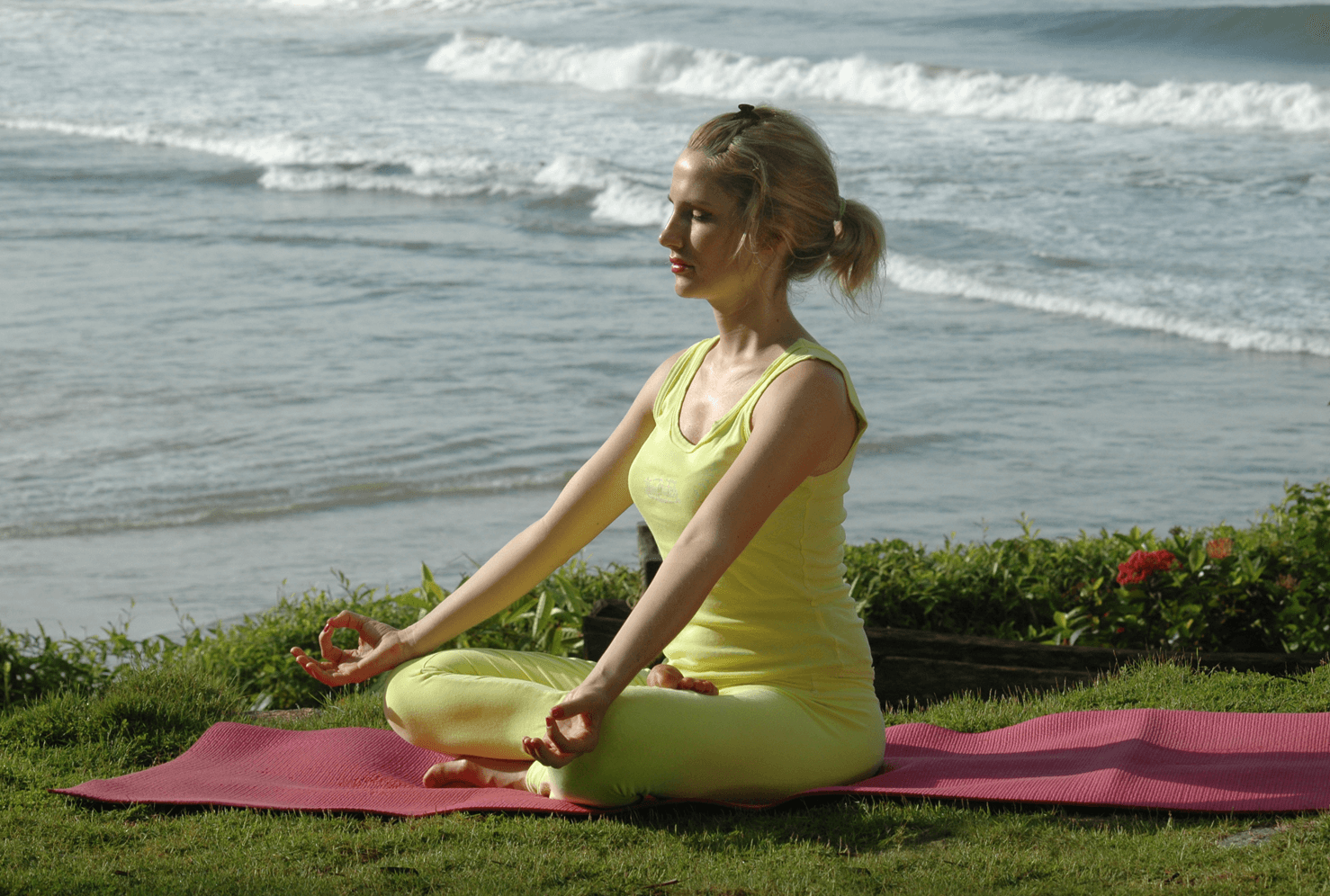Yoga et méditation
"Assurez-vous qu'il y a un environnement paisible et beaucoup d'air frais pour pratiquer"
Yoga
Le yoga et l'Ayurveda sont les deux faces d'une même médaille : la voie vers le bien-être mental et physique pour une vie longue et saine. Chez Somatheeram, nous privilégions ce duo sain pour offrir à nos clients du monde entier les meilleurs soins de santé préventifs au monde et un chemin vers la paix et un bonheur durable, grâce à l'Ayurveda, le yoga et la méditation.
Le yoga est essentiellement une discipline spirituelle fondée sur une science extrêmement subtile qui vise à instaurer l'harmonie entre le corps et l'esprit. C'est un art et une science pour une vie saine. Le mot « Yoga » dérive de la racine sanskrite « yuj », qui signifie « joindre », « atteler » ou « unir ». La pratique du yoga conduit à l'union de la conscience individuelle avec la conscience universelle.
En savoir plus...!!!
Yoga
Yoga and Ayurveda are two sides of the same coin – the path to mental and physical well-being through a long and healthy life. We at Somatheeram embrace this wholesome pair to offer our customers from far and wide the best preventive health care in the world and a way to peace and lasting happiness – through Ayurveda, Yoga & Meditation
Yoga is essentially a spiritual discipline based on an extremely subtle science which focuses on bringing harmony between mind and body. It is an art and science for a healthy living. The word ‘Yoga’ is derived from the Sanskrit root ‘yuj’ meaning ‘to join’, ‘to yoke’ or ‘to unite’. The practice of Yoga leads to the union of individual consciousness with universal consciousness.
Lire la suite...!!!
L'Ayurveda et le yoga sont des sciences sœurs. Alors que l'Ayurveda s'intéresse principalement à la santé du corps et de l'esprit, le yoga s'attaque aux problèmes de santé mentale. Les exercices de yoga, grâce à leurs effets préventifs et curatifs, favorisent l'équilibre naturel des neurohormones et du métabolisme, et améliorent le métabolisme endocrinien. Cette pratique permet de traiter le stress et les troubles liés au stress de manière naturelle.
Tous les chemins vers le bien-être physique, la paix mentale, l'harmonie et l'élévation morale se rejoignent dans le yoga. Art de vivre une vie saine et épanouie, il fait partie des six systèmes de pensée philosophique indiens. Maîtriser le yoga exige de la part de celui qui le recherche un rythme soutenu de persévérance, de persévérance, de dévouement et d'abandon total. Découvrez ce que Patanjali dit dans les « Yoga Sutras » à propos du chemin octuple pour se libérer de la douleur et de la souffrance.
Yama (cinq contraintes)
Ahimsa (non-violence)
Satya (vérité)
Asteya (Non-convoitise)
Brahmacharya (non-sensualité).
Aparigraha (non-possessivité)
Niyama (cinq observances)
Shaucha (pureté)
Santosha (Contentement)
Tapas (Austérité)
Svadhyaya (auto-apprentissage)
Ishwarpranidhaan (Abandon à Dieu)
Asana (Discipline du corps physique ou posture)
Pranayama (Contrôle de la bioénergie par l'action respiratoire)
Pratyahara (Retrait des sens vers l'intérieur par l'abstraction)
Dharna (Concentration)
Dhyana (Méditation)
Samadhi (Réalisation du Soi)
Les cinq premiers éléments sont appelés yoga externe (Bahiranga) ou Hath Yoga, tandis que les trois derniers sont appelés yoga interne (Antaranga) ou Raja Yoga. Il est presque impossible pour l'homme moyen de s'essayer au Raja Yoga avant d'avoir atteint le Hath Yoga.
Jetez un œil à quelques poses ou asanas.
Bhujangasana - Posture du cobra
Dhanurasana – Posture de l'arc
Padmasana - Posture du lotus
Sarvathangasana - Support d'épaule
Savasana - Posture du cadavre
Sirsasana - Position sur la tête
Vajrasana - Posture de l'éclair
Que faire et ne pas faire
Commencez à pratiquer le yoga sous la direction d'un expert
Tenez l’instructeur informé de tout problème médical dont vous souffrez.
Ne forcez pas vos entraînements au risque de provoquer des blessures.
Définissez un rythme qui vous convient.
Ne faites jamais de yoga immédiatement après avoir mangé
Yoga et méditation quotidiens
Séances quotidiennes de yoga et de méditation 03
Morning Timing :
7.15 – 7.45 am
Meditation
8.00 – 9.30 am
Calendrier du soir
10.00 – 11.30 am
Yoga ( Beginners)
Calendrier du soir:
4.15 – 4.45 pm
Méditation
5.00 – 6.30 pm
Yoga (intermédiaire)
Méditation
La méditation vise à atteindre un niveau de concentration élevé et à pénétrer les profondeurs de l'esprit. Le chemin vers la méditation se compose de trois phases : dharana (concentration), dhyana (méditation) et samadhi (illumination). Dhyana peut être atteint en fixant son attention pendant une longue période sur une cause particulière. Une méditation prolongée mène au samadhi ou illumination.
Au Somatheeram, le yoga et la méditation sont enseignés sous la direction expérimentée d'un gourou.
>















